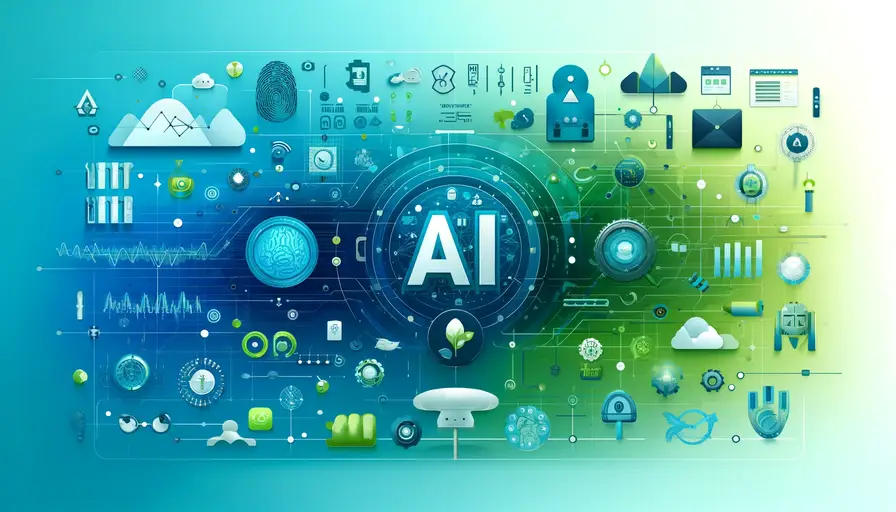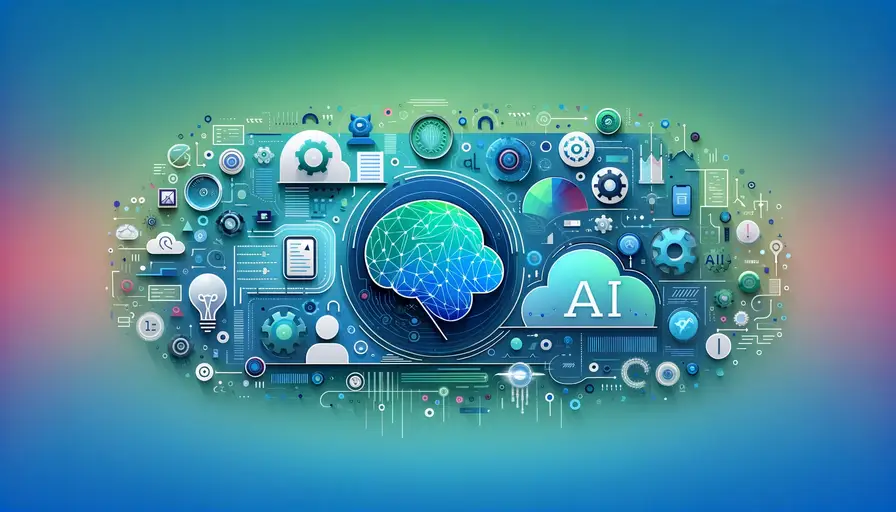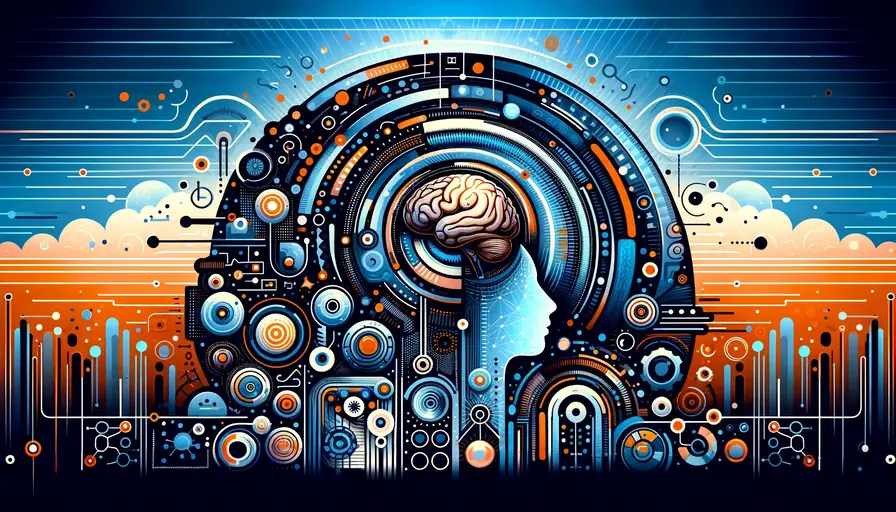
Unveiling the Transition from Machine Learning to AI

Understand the Basics
Machine Learning
Machine Learning (ML) is a subset of artificial intelligence that focuses on building systems capable of learning from data. The primary goal of ML is to enable computers to make decisions or predictions without being explicitly programmed to perform the task. This is achieved through algorithms that identify patterns in data, allowing the model to improve over time with more data exposure.
In practice, ML involves various steps such as data collection, data preprocessing, model selection, training, evaluation, and deployment. The effectiveness of an ML model largely depends on the quality and quantity of the data, the choice of the algorithm, and the tuning of hyperparameters. As ML continues to evolve, it remains foundational to the broader field of AI.
Artificial Intelligence
Artificial Intelligence (AI) encompasses a broader range of technologies designed to create machines capable of performing tasks that typically require human intelligence. These tasks include problem-solving, understanding natural language, recognizing patterns, and making decisions. AI systems are designed to simulate cognitive functions such as learning, reasoning, and self-correction.
AI is often categorized into narrow AI, which is designed to perform a specific task, and general AI, which aims to perform any intellectual task that a human can do. While narrow AI applications are already prevalent in various industries, general AI remains a long-term goal. AI integrates multiple disciplines, including computer science, mathematics, linguistics, psychology, and neuroscience.
 Machine Learning or Robotics for the Future
Machine Learning or Robotics for the FutureTypes of Machine Learning Algorithms
Supervised Learning
Supervised Learning is a type of ML where the model is trained on a labeled dataset, meaning each training example is paired with an output label. The algorithm learns to map inputs to outputs by minimizing the error between the predicted and actual labels. Common supervised learning tasks include classification and regression.
Supervised learning is widely used in applications such as spam detection, image recognition, and medical diagnosis. It requires a large amount of labeled data to perform well, and its success is heavily dependent on the quality of the annotations.
Unsupervised Learning
Unsupervised Learning involves training a model on data without labeled responses. The goal is to infer the natural structure present within a set of data points. Common tasks in unsupervised learning include clustering, dimensionality reduction, and association.
This type of learning is useful for discovering hidden patterns or intrinsic structures in data. Applications include customer segmentation, anomaly detection, and topic modeling. Unlike supervised learning, unsupervised learning does not require labeled data, making it suitable for tasks where labeling is impractical.
 Machine Learning Towards Fully Automated Systems
Machine Learning Towards Fully Automated SystemsReinforcement Learning
Reinforcement Learning (RL) is a type of ML where an agent learns to make decisions by performing actions in an environment to maximize some notion of cumulative reward. The agent explores the environment, takes actions, and learns from the rewards or penalties received.
RL is particularly useful in areas where decision-making is critical, such as robotics, game playing, and autonomous driving. It involves concepts such as exploration vs. exploitation, policies, value functions, and Q-learning. RL algorithms learn by interacting with the environment, making them suitable for dynamic and complex tasks.
Semi-Supervised Learning
Semi-Supervised Learning combines aspects of supervised and unsupervised learning. It involves training a model on a dataset that contains both labeled and unlabeled data. This approach can significantly improve learning accuracy when acquiring a fully labeled dataset is costly or time-consuming.
By leveraging a small amount of labeled data along with a large amount of unlabeled data, semi-supervised learning can enhance the performance of ML models. It is particularly effective in scenarios where labeled data is scarce but unlabeled data is abundant, such as text classification and image recognition.
 Will Machine Learning Surpass Human Intelligence in the Future?
Will Machine Learning Surpass Human Intelligence in the Future?Deep Learning
Deep Learning is a subset of ML that uses neural networks with many layers (deep neural networks) to model complex patterns in data. Deep learning excels at tasks involving large-scale data and complex feature hierarchies, such as image and speech recognition.
Deep learning models, such as convolutional neural networks (CNNs) and recurrent neural networks (RNNs), have revolutionized many fields by achieving state-of-the-art performance in various applications. The depth of the networks allows them to capture intricate patterns and representations, making them highly effective for a wide range of tasks.
Principles of Deep Learning
Neural Networks
Neural Networks are the foundation of deep learning. They consist of layers of interconnected nodes (neurons), where each node represents a mathematical function. These layers process input data, transforming it through a series of non-linear operations to produce an output.
The basic structure of a neural network includes an input layer, hidden layers, and an output layer. Each connection between nodes has an associated weight, which is adjusted during training to minimize the error in predictions. Neural networks are versatile and can be applied to various tasks such as classification, regression, and clustering.
 The Future of Data Science: Can AI Replace Data Scientists?
The Future of Data Science: Can AI Replace Data Scientists?Activation Functions
Activation Functions introduce non-linearity into neural networks, enabling them to learn complex patterns. Common activation functions include ReLU (Rectified Linear Unit), sigmoid, and tanh. These functions determine the output of a neuron given an input or set of inputs.
Activation functions play a crucial role in the training and performance of neural networks. For instance, ReLU is widely used due to its ability to mitigate the vanishing gradient problem, while sigmoid and tanh are useful in different contexts despite their susceptibility to this issue.
Backpropagation
Backpropagation is an algorithm used to train neural networks by minimizing the error between the predicted and actual outputs. It involves calculating the gradient of the loss function with respect to each weight and updating the weights accordingly.
The backpropagation process consists of a forward pass, where the input is propagated through the network to generate an output, and a backward pass, where the gradients are computed and the weights are updated. This iterative process continues until the model converges to a solution with minimal error.
 The Future of Machine Learning: Rising Demand and Opportunities
The Future of Machine Learning: Rising Demand and OpportunitiesConvolutional Neural Networks (CNNs)
Convolutional Neural Networks (CNNs) are specialized neural networks designed for processing structured grid data, such as images. CNNs use convolutional layers to automatically and adaptively learn spatial hierarchies of features from input images.
CNNs are widely used in image recognition, object detection, and other computer vision tasks. Their architecture includes convolutional layers, pooling layers, and fully connected layers, which work together to extract and classify features from images efficiently.
Recurrent Neural Networks (RNNs)
Recurrent Neural Networks (RNNs) are designed to handle sequential data by maintaining a hidden state that captures information about previous inputs. This makes them suitable for tasks involving time series or natural language data.
RNNs are used in applications such as language modeling, machine translation, and speech recognition. They can capture temporal dependencies in data, but they are prone to issues like the vanishing gradient problem. Variants like LSTMs (Long Short-Term Memory) and GRUs (Gated Recurrent Units) address these issues.
 Quantum Computing's Impact on Black Box Machine Learning Algorithms
Quantum Computing's Impact on Black Box Machine Learning AlgorithmsGenerative Adversarial Networks (GANs)
Generative Adversarial Networks (GANs) consist of two neural networks, a generator and a discriminator, that compete against each other. The generator creates fake data, while the discriminator evaluates the authenticity of the data. Through this adversarial process, GANs learn to generate realistic data.
GANs have been used to create high-quality images, videos, and even music. They are particularly effective for tasks that involve generating new data samples that are indistinguishable from real data. GANs have opened up new possibilities in creative fields and synthetic data generation.
Train and Optimize Models
Data Preprocessing
Data Preprocessing involves cleaning and transforming raw data into a format suitable for training machine learning models. This includes handling missing values, normalizing or scaling features, and encoding categorical variables.
Effective data preprocessing is crucial for the success of ML models. It ensures that the data is consistent, accurate, and ready for analysis. Proper preprocessing can significantly improve the performance and robustness of the models.
Algorithm Selection
Selecting the Right Algorithm is critical to building effective machine learning models. The choice of algorithm depends on the nature of the problem, the type of data, and the specific requirements of the task. Common algorithms include decision trees, support vector machines, and neural networks.
Each algorithm has its strengths and weaknesses, and selecting the appropriate one can have a significant impact on the model’s performance. Experimentation and domain knowledge play key roles in making the right choice.
Splitting Data
Splitting the Data into training and testing sets is a standard practice to evaluate the performance of machine learning models. The training set is used to train the model, while the testing set is used to assess its generalization ability.
A common split ratio is 80/20 or 70/30, but this can vary based on the dataset size and the specific application. Ensuring a representative split helps in obtaining an unbiased estimate of the model’s performance on new data.
Hyperparameter Tuning
Hyperparameter Tuning involves optimizing the settings of the hyperparameters, which are parameters set before the learning process begins. This includes learning rate, batch size, and the number of epochs. Hyperparameter tuning can be done through techniques like grid search, random search, and Bayesian optimization.
Tuning hyperparameters is essential for achieving the best performance from a model. It can significantly improve accuracy, reduce training time, and enhance the model’s ability to generalize.
Cross-Validation
Cross-Validation is a technique used to assess the performance of a model by dividing the data into multiple subsets and training the model on each subset. This provides a more comprehensive evaluation of the model’s performance and helps in detecting overfitting.
Cross-validation helps in making better use of the available data and provides a more reliable estimate of the model’s performance. It is particularly useful when the dataset is small or when the model’s performance varies significantly across different subsets of the data.
NLP and Computer Vision
Rise of NLP
Natural Language Processing (NLP) is a field of AI that focuses on the interaction between computers and human language. NLP techniques are used to analyze, understand, and generate human language in a way that is both meaningful and useful.
NLP applications include machine translation, sentiment analysis, chatbots, and text summarization. The rise of NLP has been driven by advancements in deep learning, which have significantly improved the ability of machines to process and understand natural language.
Power of Computer Vision
Computer Vision is a field of AI that enables machines to interpret and make decisions based on visual data. This involves tasks such as image recognition, object detection, and video analysis.
Computer vision applications are widespread, ranging from medical imaging and autonomous vehicles to security and surveillance. The power of computer vision lies in its ability to extract valuable insights from visual data, making it a critical component of many AI systems.
Future Integration
The Integration of NLP and Computer Vision represents the future of AI. Combining these two fields can lead to more advanced and capable AI systems that can understand and interact with the world in more sophisticated ways.
For example, integrating NLP and computer vision can enhance applications such as visual question answering, where a system can analyze an image and provide answers to questions about it. This integration opens up new possibilities for creating more intelligent and interactive AI systems.
Reinforcement Learning
Introduction to RL
Reinforcement Learning (RL) is a type of machine learning where an agent learns to make decisions by interacting with an environment. The agent receives rewards or penalties based on its actions and learns to maximize cumulative rewards.
RL is inspired by behavioral psychology and is used in areas such as robotics, game playing, and autonomous vehicles. It involves concepts such as states, actions, rewards, and policies, which define the behavior of the agent.
RL Applications
Applications of RL are diverse and impactful. In robotics, RL is used to teach robots to perform tasks autonomously. In gaming, RL has achieved remarkable success, with agents surpassing human performance in games like Go and Dota 2.
RL is also applied in areas such as finance for optimizing trading strategies and in healthcare for personalized treatment planning. Its ability to learn and adapt makes RL a powerful tool for solving complex problems.
Challenges and Future
Challenges in RL include the need for large amounts of data and computational resources, as well as the difficulty in defining appropriate reward functions. Additionally, ensuring the safety and reliability of RL systems in real-world applications is a significant concern.
Despite these challenges, the future of RL is promising, with ongoing research aimed at addressing these issues and expanding the range of RL applications. Advances in RL are expected to drive further innovation and breakthroughs in AI.
AI Ethics
Ethics in AI is a critical area of concern as AI systems become more integrated into society. Key considerations include fairness, transparency, accountability, and privacy. Ensuring that AI systems are developed and deployed responsibly is essential to prevent harm and build public trust.
Ethical guidelines and frameworks are being developed to address these issues, but there are still many challenges to overcome. It is important for developers, policymakers, and stakeholders to work together to ensure that AI is used for the benefit of all.
The Social Implications of AI are profound and wide-ranging. AI has the potential to transform industries, create new job opportunities, and improve quality of life. However, it also raises concerns about job displacement, inequality, and the potential misuse of AI technologies.
Addressing these social implications requires a proactive and inclusive approach. It involves not only technical solutions but also public dialogue, education, and policy development to ensure that the benefits of AI are shared broadly and equitably.
Stay Updated
Evolution of ML
The Evolution of Machine Learning is marked by continuous advancements and innovations. Staying updated with the latest developments is crucial for practitioners to remain competitive and effective in their work. This includes keeping abreast of new algorithms, tools, and best practices.
Regularly reading research papers, attending conferences, and participating in online forums are effective ways to stay informed. Engaging with the ML community helps in gaining insights and staying ahead of the curve.
Advancements in AI
Advancements in AI are rapid and transformative. Breakthroughs in areas such as deep learning, reinforcement learning, and natural language processing are driving the field forward. Keeping up with these advancements is essential for understanding the current state of AI and its future direction.
AI practitioners can benefit from following leading AI researchers, subscribing to relevant journals, and participating in professional networks. Continuous learning and adaptation are key to thriving in the dynamic field of AI.
Importance of Staying Updated
Staying Updated is not just about knowledge acquisition but also about applying new insights to improve practice. The fast-paced nature of AI means that what is cutting-edge today may become obsolete tomorrow. Being informed enables practitioners to leverage the latest tools and techniques to solve real-world problems effectively.
Staying updated also involves understanding the ethical, social, and legal implications of AI. As AI technologies evolve, so do the challenges and responsibilities associated with their use. Being aware of these aspects is crucial for responsible AI development and deployment.
Further Education and Collaboration
Pursuing Education
Further Education in AI can significantly enhance one's expertise and career prospects. This can include advanced degrees, specialized certifications, or targeted online courses. Educational programs provide structured learning, access to expert knowledge, and opportunities for hands-on experience.
Pursuing further education helps in gaining a deeper understanding of AI concepts and staying updated with the latest research. It also provides a formal recognition of one's skills and knowledge, which can be valuable in the job market.
Collaboration and Research
Collaboration and Participation in AI research projects offer practical experience and insights. Working with experts and peers on cutting-edge projects can accelerate learning and lead to innovative solutions. Collaboration fosters knowledge exchange, skill development, and professional growth.
Participating in research projects also helps in contributing to the advancement of the field. It provides opportunities to tackle real-world challenges and push the boundaries of what is possible with AI. Networking with researchers and professionals can open doors to new opportunities and collaborations.
Transitioning from machine learning to AI involves understanding the fundamental concepts, staying updated with advancements, and engaging in continuous learning and collaboration. By leveraging these strategies, one can effectively navigate the evolving landscape of AI and make meaningful contributions to the field.
If you want to read more articles similar to Unveiling the Transition from Machine Learning to AI, you can visit the Trends category.



You Must Read